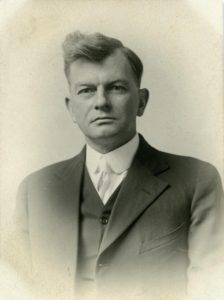By Jessica Fischer, alumni of IUPUI, Indianapolis, IN and AMM volunteer
I’ve spent the last several months digitizing the AMM archives which gave me a chance to dive deeper into AMM’s history. Through all of the membership lists, meeting minutes, and correspondence, I have come across more than a few interesting tidbits from AMM’s past.
1) A Struggling Organization-from MIMA to MIO…
The Michigan-Indiana Museum Association (now AMM) had a bit of a rough start. Correspondence from President Carl Guthe expressed concerns that the group would dissolve before its 5th anniversary, “There is a serious possibility of the organization disintegrating through lack of interest. Mr. Brigham and I are anxious to save the Association, if we can, by last minute measures. We shall make a strong appeal for attendance at the coming meeting…”. And their appeals were successful. They even gained enough interest from professionals in Ohio to officially add the state to both their membership base and their name-the Michigan, Indiana, Ohio Museum Association.
2) Conference themes weren’t a thing until the 1950’s…
Every year AMM holds a conference with a specific theme. This year’s theme for example is Strong Roots and Thriving Communities. Last year’s theme was Innovation, which was the second time AMM has presented a conference around this theme-but hey, museum professionals should always be striving for innovation in our field. The themes that guide the sessions, however, were not always part of the conferences. It was not until the 1952 with the Silver Anniversary (25 years!) that AMM members made a deliberate effort to focus the conference around a specific theme, in this case exhibit design.
3) AMM’s first international professional…
AMM serves the Midwest by providing support and resources for it members and their organizations, but its reach extends beyond this region. Through the early 1940s, the association only accepted members from the five states that it served at the time, but by 1948, the association expanded who could become a member, gaining its first international member, Clifford P. Wilson of the Hudson’s Bay House in Winnipeg, Manitoba. By 1953 AMM included members from Canada, France, and Germany. So even though AMM’s focus is on providing programs for the Midwest specifically, it also welcomes and provides support to all museum professionals.
4) Adding art to the conference agenda…
Up until the 1940s, AMM conferences focused on history and science. But in 1939, prospective member, J. Arthur Maclean wrote that “One of the reasons I have not been more interested in the MIO Association is that it always seemed to me largely made up of science men. Certainly, if I am asked to assist with the program next year, I will suggest as much of a balanced program as possible, with art museum activities adequately represented” making the case for the inclusion of art in the conferences. That next year the conference included sessions such as “Tendencies in American Art” as well as a tour of the Toledo Museum of Art led by J. Arthur MacLean-now Ohio’s representative for AMM.
5) Helping museums and their communities…
AMM’s original statement of purpose was to “promote cooperation between its members and museums and museum workers in general”, but AMM also provided assistance beyond that. In 1943, the Department of Conservation’s Ann Arbor Planning Committee began a WPA project called the Southeastern Michigan Recreation Project which aimed to provide better recreational facilities for the community, including expanding museums. AMM Secretary-Treasurer Helen LeFavour contributed to the cause on behalf of AMM by writing to Michigan legislators in support of the bill. And it passed, providing Southeastern Michigan residents access to better cultural and recreational resources.
Bonus Fact: Our founder George R. Fox had some mad style…

(George R. Fox image courtesy of Bentley Library at University of Michigan)
Bonus, Bonus Fact: Membership dues used to be just $1, which was sufficient enough to cover the majority of the costs for producing the quarterly newsletters.
